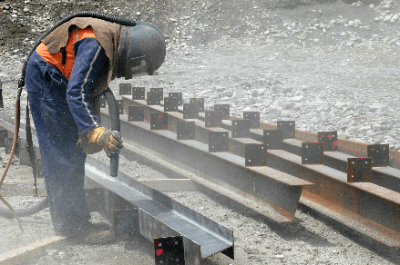What Is a Sandblaster?
 A sandblaster is a process or machine used for cleaning, finishing, and surface treatment of processed products by spraying fine particles of sand or steel balls onto a surface.
A sandblaster is a process or machine used for cleaning, finishing, and surface treatment of processed products by spraying fine particles of sand or steel balls onto a surface.
The terms “sand blaster” and “shot blaster” refer to machines that blast sand and fine steel balls, respectively. Additionally, aqua blasters and jet blasters use high-pressure water or air for cleaning, particularly in water piping and other applications. This discussion focuses on sandblasters, which primarily spray sand, steel balls, and similar materials.
Uses of Sandblasters
Sandblasters are employed in surface treatment processes, such as deburring, rust removal, cleaning, and surface preparation of metalworking products. They can smooth surfaces for mirror finishing or create a matte finish to reduce luster. Sandblasters also enhance the finish of 3D-printed products by making powder and lamination marks less noticeable and can strengthen metal surfaces through shot peening or nanocrystallization strengthening, such as the alpha (α) treatment.
Additionally, sandblasters serve artistic purposes in glass crafts and stone carving.
Principle of Sandblasters
Sandblasters typically use compressed air to propel fine particles against surfaces, removing burrs and debris. The impact of these particles can significantly alter the surface’s appearance, smoothing or texturizing it as needed. Shot peening, which involves blasting steel balls or similar objects onto a surface, utilizes both compressed air and centrifugal force to achieve a roughened, strengthened finish.
Types of Sandblasters
Sandblasters range from portable devices to large-scale factory installations, with portable machines operating at compressed air pressures of 1 MPa or less. Factory equipment may feature rotating tables, conveyors, and automatic processing capabilities for high-volume production.
Other Information on Sandblasters
Types of Abrasive Materials
The choice of abrasive material is crucial, with options including:
- Ceramic/Glass Abrasives: Alumina, silicon carbide, glass beads, and zirconia are used for their hardness and effectiveness.
- Resin and Vegetable Abrasives: Used for gentle deburring and cleaning, these abrasives prevent damage to delicate surfaces.
- Metal Abrasives: Ideal for intensive cleaning and surface strengthening, available in iron and stainless steel varieties.
- Special Abrasives: Molybdenum dichloride, dry ice, and baking soda are used for specific applications, offering unique benefits like solid lubrication, sublimation cleaning, and food-safe cleaning.